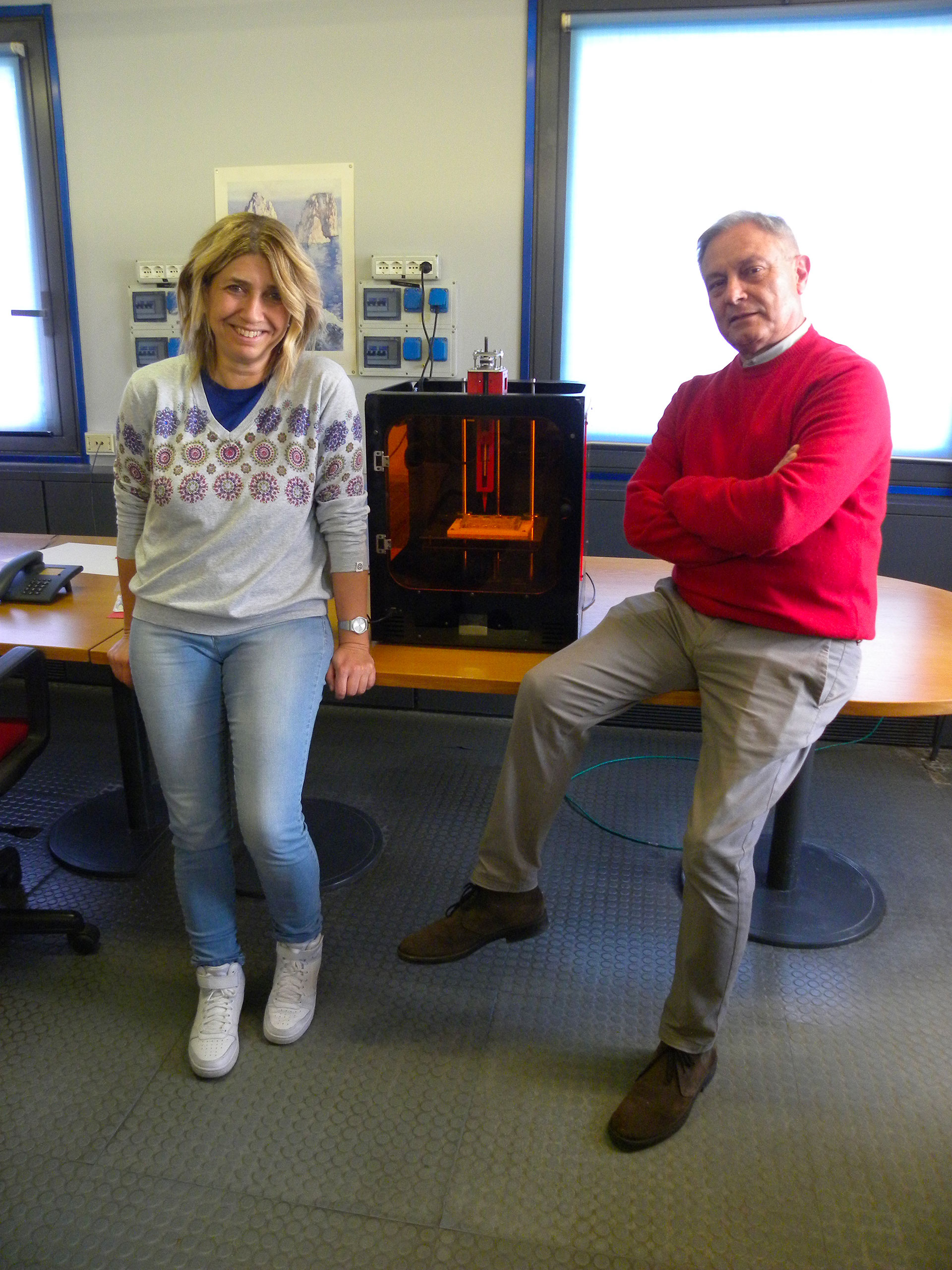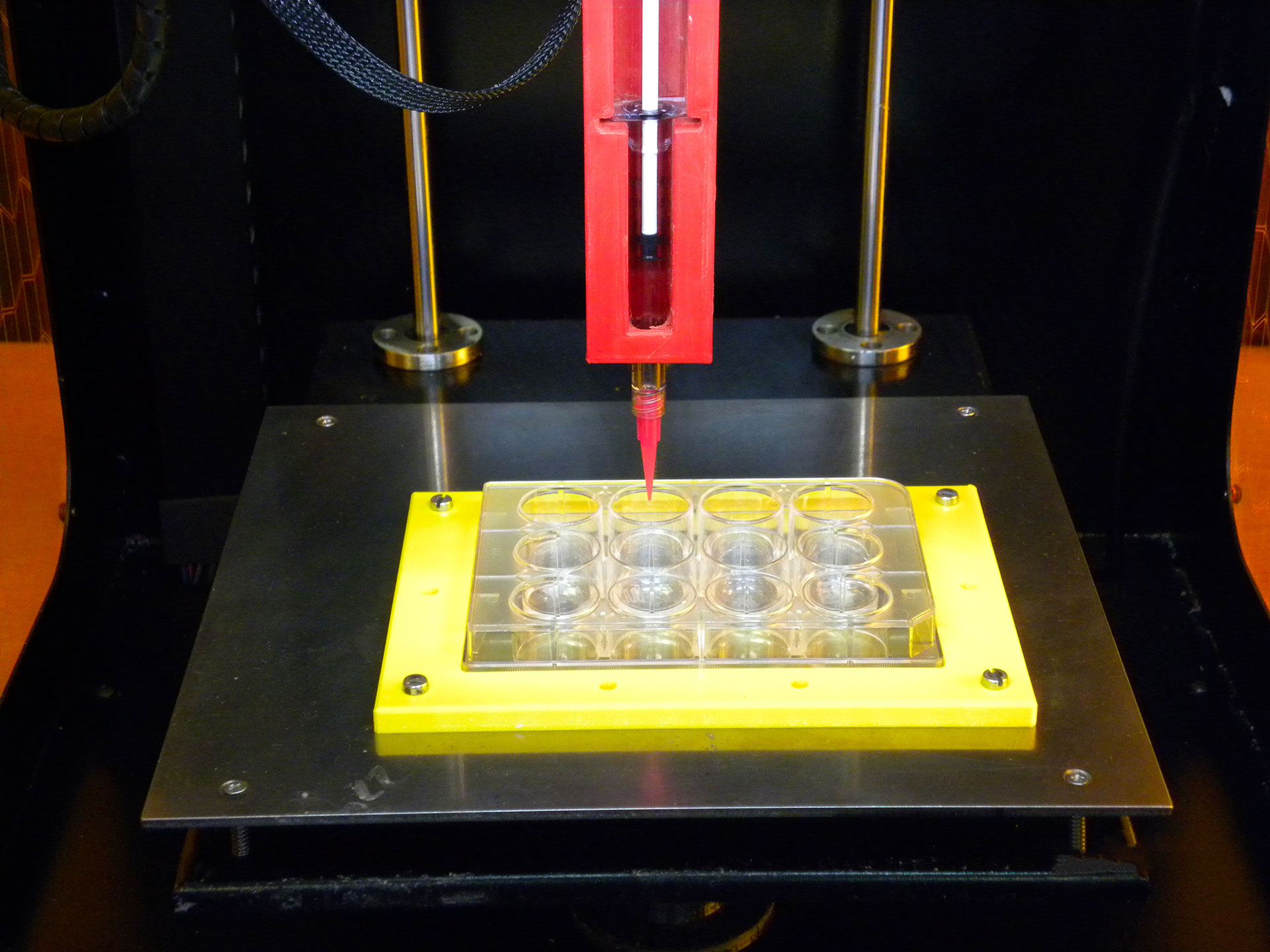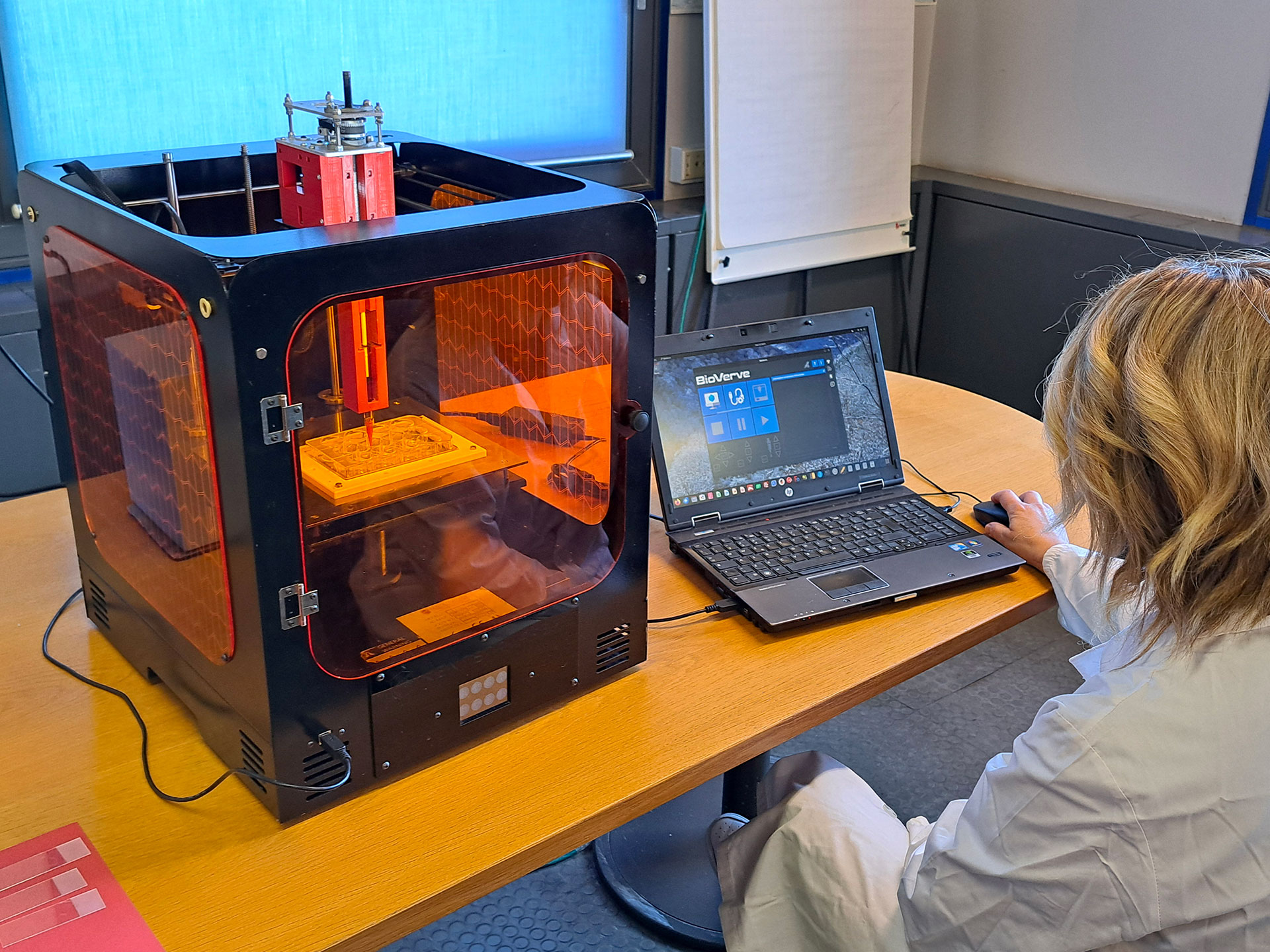Italian National Agency for New Technologies, Energy and Sustainable Economic Development

Health: ENEA develops 3D bioprinting technology to accelerate cancer research
ENEA has developed a low-cost bioprinter[1], called BioVERVE, capable of 'reproducing' 3D models of tumors, with the aim of advancing research on cancer treatment[2]. Created in collaboration with the Tuscan company Kentstrapper Srl, thanks to a POC loan[3], it provides a performance comparable to professional bioprinters, capable of obtaining three-dimensional cellular structures with accuracy and fast print speed (a few dozen of seconds per structure).
“Compared to traditional in vitro cultures, 3D bioprinted models can mimic human tissue more effectively, both healthy and pathological, providing a complementary model for studies on radiation and chemotherapy effects on tumors,” explained Francesca Antonelli, researcher at the ENEA Laboratory of Biomedical Technologies, who followed the project with Mariateresa Mancuso, head of the ENEA Division of Technologies and Methodologies for Health Protection and Paolo D'Atanasio, Antonio Rinaldi, Alessandro Zambotti.
“Although over the last decade there has been a significant increase in the use of 3D models in the fight against cancer, the impact has been limited by the high costs of professional bioprinters on the market (between 50 and 200 thousand dollars). We have modified a low-cost 3D printer into a home-made 3D bioprinter capable of printing a three-dimensional model of medulloblastoma, the main pediatric brain tumor[4] with excellent results", said the researcher.
Currently, despite significant efforts dedicated to preclinical testing, many promising therapies struggle to successfully transition from the laboratory phase to clinical practice. A plausible explanation for the discrepancy observed between preclinical data and clinical data could derive from the lack of preclinical cellular models capable of faithfully replicating the complexity of the clinical context. Thanks to the excellent performance and affordability of the ENEA 3D bioprinter, researchers will be able to develop and test new therapeutic approaches to improve survival of cancer patients.
“The possibility of modifying non-professional 3D printers to adapt them to bioprinting processes can considerably reduce the costs of laboratory equipment, broadening access to the technology and, consequently, pave the way for new lines of biomedical research”, concluded Francesca Antonelli.
Notes
[1] Bioprinting allows to more closely mimic in vivo human microenvironments. The bioink used for printing is made up of living cells, biocompatible biomaterials and/or active biomolecules.
[2] The results were published in the journal Applied Sciences.
[3] ENEA "Proof of Concept" Program funds projects aimed at development and technological innovation for the market, based on the results of the Agency's research, in an "open innovation" approach.
[4] Medulloblastoma is the most common malignant brain tumor in children; its treatment through chemotherapy strongly depends on the presence and integrity of the blood-brain barrier, an endothelial structure that hinders the penetration of many molecules into the brain, including chemotherapeutic agents. The structures created using 3D printing include the blood brain barrier in order to test drug penetration.



